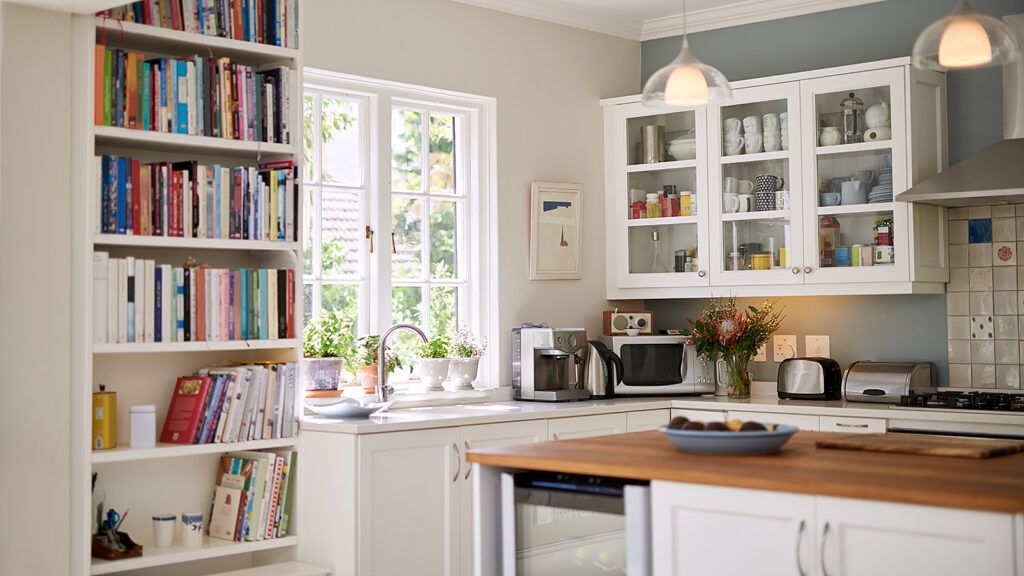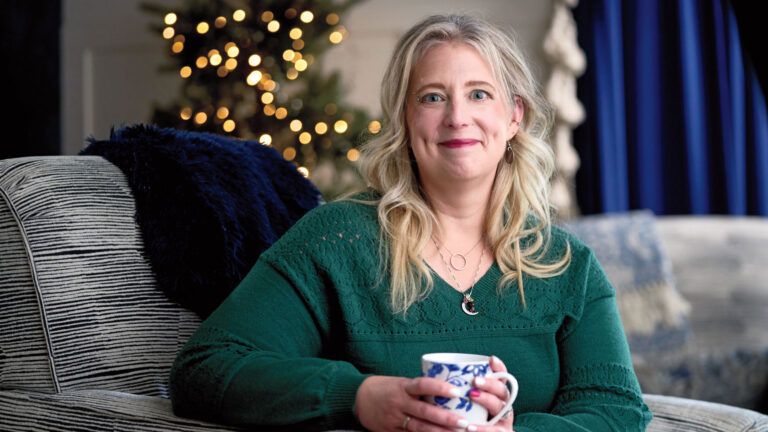Dana K. White still finds it hard to believe she has earned the title “decluttering expert.” She used to be a self-described slob.
“I was completely overwhelmed by my home and the stuff in my home,” White told Guideposts.org.
White had always wanted to be a writer, but felt like the chaos in her home was holding her back from pursuing her dream. When she prayed about it, she felt God prompting her to write about the very thing she thought was holding her back—her messy house.
White listened to the prompting and started a blog called A Slob Comes Clean, where she connected with a community of readers who also struggled with managing their homes.
“I realized there were so many other women [struggling],” White said. “I had to come up with strategies to break through my irrational emotional attachments. I wear the title ‘Declutter Expert’ proudly, because I’ve had to do it.”
Her new book Decluttering at the Speed of Life offers practical decluttering advice for every space in the home. One of the most common areas White said readers struggle to manage is the kitchen. Here are some of her best ideas for decluttering and organizing your cooking space:
1. Identify and remove “Duh” Clutter
White recommends tossing items that obviously don’t belong.
“A lot of us who struggle with clutter really love to analyze things,” White said. “There are things that don’t need to be analyzed. I give myself permission to just stick stuff in the donate box.”
She says to view this tip as a “permission slip” to get rid of “duh” clutter before tackling the more difficult items.
2. Ask yourself “Where would I look for this first?”
White has found that asking yourself this question simplifies organizing a kitchen.
“When you come across something in your kitchen, what’s the first drawer you would open to look for [it]?” White asked. “That’s where it should go.”
If you’re struggling to imagine where you would look for something, White recommends a follow-up question: “Would it even occur to me that I have this?” Even if something is useful or valuable, if you don’t use it, you don’t need it. If it’s not an item you use or would remember to look for, it can go in the toss pile.
3. Eliminate unnecessary steps
White’s mother helped her organize her own kitchen and gave White some advice: a kitchen should be organized to maximize efficiency.
“So, if you’re at your stove, the things that you need consistently, again and again at your stove, need to be in the spaces around your stove,” White said.
4. Embrace the container concept
One of White’s main decluttering philosophies is an idea she calls the “container concept.” She uses this concept to shift focus from organizing mountains of belongings, to identifying your storage as the limit of how much you can own.
“Each space within your home—including drawers and cabinets and pantries—is a limit,” White said.
Once you’ve reached the limit of your container, you have to start getting rid of things.
“The key is to put your favorite things in there first, and then whatever doesn’t fit, goes,” White said. “That naturally sorts out what you need to keep and what you don’t.”
5. Consolidate
A common problem White has noticed in kitchens is an excess of duplicates. It’s a problem she faced in her own home—owning multiple skillets and other kitchen knick-knacks. The final step of the decluttering process is consolidating and getting rid of unneeded extras.
“Put ‘like’ things together,” White said. Doing this will allow you to see how many of each item you own. Then, using the container concept, figure out how many of that item will fit in your space and keep only that number.
White knows it can feel overwhelming to attempt to declutter and re-organize your kitchen, but she had one final tip for those longing to declutter, but feeling stuck.
“When you’re overwhelmed, the key is to get started,” White said. As you get started, you will see this space much more realistically, and you reduce the overall volume of stuff, which then reduces the feeling of being overwhelmed.”





